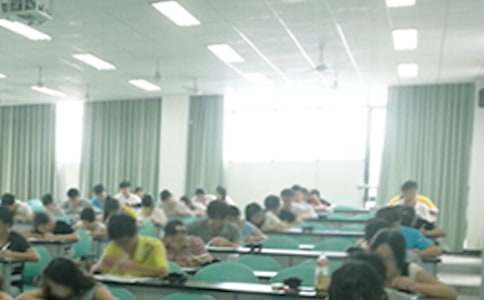- 相关推荐
2017商务英语BEC中级考试听力练习题
Questions 23-30

● You will hear the chairman of a business institute making a speech about new business awards that that his institute has sponsored.
● For each question(23-30), mark one letter (A, B or C) for the correct answer.
● After you have listened once, replay the recording.
23 The aim of the ‘Business Today’ competition was to rewardA good produce design.B skilful project management.C rapid financial success.
24 How many companies were chosen to compete in the final of the competition?A fourB fourteenC forty
25 The types of products which the finalists were developingA caused considerable problems for the judges.B were all connected with the food industry.C involved a common set of development aspects.
26 According to the speaker, what are small firms good at?A fitting new products in with current productionB recording methods used in developing new productsC developing new management structures for products
27 The speaker believes big companies document innovation well because ofA the number of staff availableB the involvement of senior management.C the insistence on regular procedures.
28 The panel was impressed by Natura because they hadA invested considerable time investing a new product.B researched new ways of manufacturing their product.C investigated new overseas markets for their product..
29 The judges praised the links between development teams in smaller companies andA senior management.B suppliers.C the market.
30 The companies sometimes had problems because the suppliersA could not understand the specifications.B could not meet the deadlines.C could not rely on their subcontractors.
答案:23-30 BBCA CBAC
听力原文:
Man: Who are the managers of the best innovation developments in British industry? That was the question which the first Business Today Innovation Awards set out to answer. This project is all about rewarding good practice and performance. So, rather than simply recognizing excellence in the design of specific products, or analysing their financial impact on profits, the awards set out to take an objective look at exactly how companies mange the development process itself.Over three hundred and fifty organizations entered the competition and were initially reduced to about forty. Then, after further ca
careful checking, a short list of just fourteen of them was arrived at. These finalists, all manufacturers, were then visited by the competition judges, a panel of four chief executives from leading companies. The panel toured the finalists facilities, received presentations on the companies and their projects, and interviewed the key development team members. The products varied enormously in their scale, function and degree of technology-from bread for a supermarket chain to a printer inside an automatic cash dispenser. Initially the organizers were concerned that this range could create difficulties in the assessment process. But this fear proved baseless, as most elements in the innovation process are shared by all manufacturers.
Interestingly, the finalists broke down into two distinct and equal groups: large firms with one thousand employees or more and small firms with two hundred and fifty employee or fewer. With both groups the judges decided to concentrate on two of the clearest indicators of a successful innovation process, which are: how well the new product is combined with the company’s existing business, and secondly, how well the innovation methods are recorded and understood. Small firms naturally tend to do well in the first category since they have fewer layers of management and thus much shorter communication lines. But they seem to put less emphasis on creating formal development methods which would be repeatable in future innovations.
Large firms, on the other hand, have difficulty integrating the new development within their existing business for reasons of scale. But they tend to succeed in achieving well-documented and repeatable development methods. This is because larger companies, with their clear emphasis on training, fixed management structure and administrative systems, require more formal, daily record-keeping from their staff.
So what were the key questions the judges had in mind when assessing the finalists? One of the most important areas concerned how thoroughly a company checks what is happening in other fields in order to incorporate new ideas into the development process. Many of the finalists impressed in the area. Natura, for example, had demonstrated genuine energy in searching for new ways of producing their range of speciality breads. They had looked at styles of home cooking in different countries, as well as the possibility of exploiting new production technologies in order to achieve equally good results but on a high-volume production line.
What then occupied much of the judges’ thoughts was the quality of the links which the development team established with senior management, suppliers, the market and manufacturing. The best examples of the first category were found in small firms, where the individual entrepreneur at the top was clearly driving the innovation forward.
Links with suppliers were also seen as an important factor, but not all supplier experiences were positive. Occasionally serious problems had to be solved where suppliers were working hard to meet specifications, but the companies that the suppliers were using to adapt their machinery were not so efficient. This led to disappointing faults or fluctuations in quality.
But in conclusion the awards demonstrate that innovation isn’t just for high-tech internet companies. You can also be successful in mature markets with determination and skill.
【商务英语BEC中级考试听力练习题】相关文章:
BEC考试听力短语07-03
BEC中级口语的考试简介07-03
商务英语BEC初级口语考试短句摘抄07-03
BEC中级阅读之欧洲私人股本投资情况07-02
IELTS考试的听力考试分析07-03
2017年BEC考试时间07-06
BEC口语考试必备话题参考07-04
雅思的听力考试原则07-04
雅思听力考试原则07-04
雅思听力考试诀窍07-03